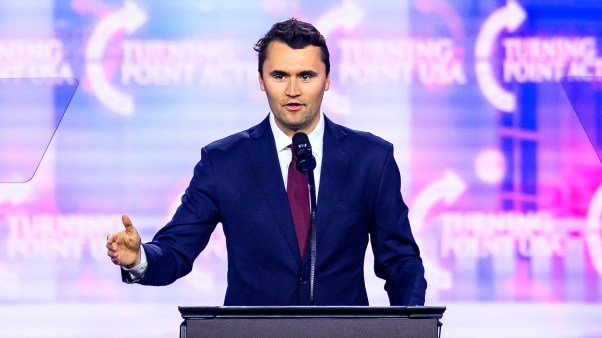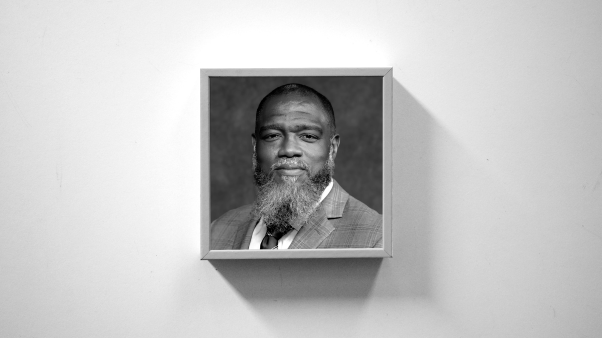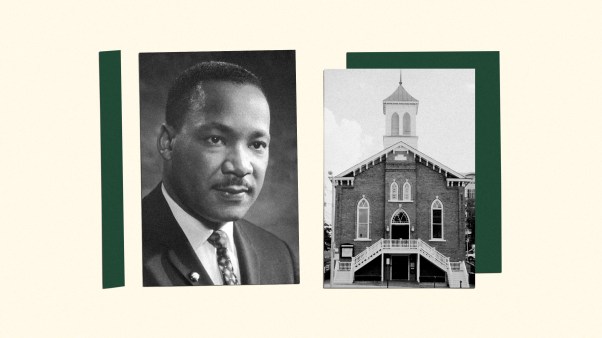No one who looks seriously at the Protestant scene in America can ignore the dynamics of the last 30 years.
Before the sixties there was little reason to question the vitality of American religion. From the beginning, most of this country’s denominations have grown faster than the population. Moreover, the years between 1950 and 1964 saw a church-membership surge that verged on “religious revival,” giving the lie to the secular prophets who believed that Christianity would “wither in the bright sun of modern culture.”
However, in the midsixties, an unexpected and massive change began. Many of this country’s culture-affirming “mainline” denominations began to experience membership declines for the first time. The declines were sudden, dramatic, and persistent. Between 1965 and 1985, for example, the Presbyterian Church declined 24 percent, the Episcopal Church (U.S.A.) declined 20 percent, the United Methodist Church declined 16 percent, and the Disciples of Christ declined 42 percent.
Meanwhile, conservative churches and religious movements grew. Between 1965 and 1985, the Assemblies of God more than tripled, the Church of God (Cleveland, Tenn.) increased nearly two-and-a-half times, Mormons and Jehovah’s Witnesses more than doubled, and the Seventh-day Adventists grew by almost 80 percent. Conservative denominations closer to the mainstream also grew, generally at a slower rate: the Church of the Nazarene grew by 50 percent and the Southern Baptist Convention, America’s largest Protestant denomination, grew by 34 percent.
However, to focus on established denominations may be to miss key evidence of religious vitality. The spiritual thrust of experience-centered, Bible-toting believers has generated a spate of new sects and independent churches. Many of these new churches sprouted from the Jesus movements of the seventies. These “Jesus Freak” groups, as they were known among themselves, attempted to substitute a variety of religious experiences for the heightened psychic awareness sought earlier through psychedelic drugs. While the seventies spelled the end of the counterculture, many of the new evangelical and charismatic movements that had their beginnings in the Jesus movement continued to grow through the eighties. Some of these groups are today’s “megachurches.”
Church-growth scholars, parish pastors, and enlightened lay leaders are wondering why these movements have grown. And some futurists are eagerly asking if they will be the denominations of the next century. Here are three of the most probable candidates for denominationhood.
Calvary Chapel: “Pastor Chuck” As Spiritual Grandfather
One of the strongest movements began amid the bean fields of Santa Ana, California. In 1965, Chuck Smith, a pastor with 17 years of ministry in Foursquare Gospel churches, took over a fundamentalist church whose membership had dwindled to 25. “One year later we had 100, two years later we had 200 … today we have over 10,000 tithing families in three Sunday services and meetings every night of the week,” says Smith.
In 1971, the fellowship moved to a low-slung building in Costa Mesa, where it is still located. By then it was attracting crowds of young people, including many ex-hippies. Explained Smith, “We accepted them, and they accepted Christ.”
Smith is as unassuming as his movement’s beginnings. He is “low-profile by design,” says assistant pastor L. E. Romaine—more comfortable in a Hawaiian shirt than a dark suit, and known to his flock as “Pastor Chuck.” His Bible is the classroom text he systematically expounds. According to Romaine, “He starts with Genesis and teaches chapter by chapter through Revelation.”
Today Calvary Chapel includes a 21-acre campus with a religious bookstore, a Christian school with 1,500 pupils, a fellowship hall, and multiple, hopelessly overcrowded, parking lots.
Beyond the borders of this booming church is a “fellowship” of over 350 other Calvary Chapels. Smith says affiliate churches are in every state and “around the globe”—in Australia, Mexico, Hong Kong, Africa, and even the People’s Republic of China where it has delivered 1 million Chinese Bibles to the underground house churches. These fellowships are not the result of an aggressive church-planting scheme. According to Smith, they merely “evolve and God gets behind it.” Recently, a young pastor was sent to “start sharing” in Yugoslavia. “He began playing his guitar in the park,” Smith says, “and I just learned he has over 100 kids.”
Smith sees his role with these developing congregations as being like Paul’s with Timothy, visiting the new churches of the ancient world. “I am really more like a spiritual grandfather who offers advice and counsel,” says Smith.
The Vineyard Christian Fellowship: Signs And Wonders
In 1973, the seeds of another movement were planted in the fertile soil of religious openness in Southern California. This church began as a Bible-study group led by Kenn Gullikson, a well-known “Jesus movement” pastor. This study group in the San Fernando Valley took root, grew steadily, and became the original Vineyard Christian Fellowship.
In the midseventies, Gullikson began another “Vineyard” in West Los Angeles. This fellowship grew to more than 1,000 in one year. Later, he made a similar move to Newport Beach, where his flock again grew to over 1,000. As Gullikson moved on, Vineyards were left behind. By the early eighties, there were five Vineyard fellowships in Southern California.
The second phase of Vineyard development began with a group of members from a Friends church led by an ex-music arranger for the Righteous Brothers, John Wimber. These people, “in openness to the Holy Spirit,” reported a trickle of miraculous healings that eventually became a flood. Asked by the Friends to leave the church, and reluctant to remain independent, Wimber asked Chuck Smith if his group could join the Calvary Chapel fellowship. In May 1977, the group held its first meeting in a park as Yorba Linda Calvary Chapel. Five years later they had more than 2,000 members.
About this time, Wimber’s ministry became more focused on “signs and wonders” than Smith’s. Wimber dropped the name “Calvary Chapel” and approached Gullikson about his church becoming a “Vineyard.” Gullikson not only agreed but turned the entire Vineyard movement over to Wimber.
In 1983, Wimber’s congregation moved to its current Anaheim location, where it has grown to over 5,000 members. One visit to the nondescript ware-house-style church causes outsiders to ask what is so special. The answer: John Wimber’s leadership. Under his lofty vision and aggressive plan to grow 10,000 new Vineyards, the movement is experiencing the expansion pains of an incipient denomination. Approximately 500 men have been ordained. There are more than 300 churches in the U.S. and Canada. Although these churches have no legal ties, the name Vineyard has been trademarked, and, according to Gullikson, who now serves as church-planting consultant for Vineyard Ministry International, the “fellowship” has established regional and area coordinators who are “trained, tested, gifted, and called.” A 200,000-square-foot building is being purchased and renovated for $15 million to house the expanding work.
No one doubts Wimber’s authority in this movement. Rick Colquhoun, pastor of children’s ministry in Anaheim, says, “He doesn’t really have a title, [but] John is more like an apostle or a bishop.” Wimber sees himself as “the pastor’s pastor.”
Church On The Rock North America: A New Bishop
Another movement that shows signs of becoming a denomination is Larry Lea’s Church on the Rock, begun in a Dallas suburb in 1980 with 13 members. A decade later, the church’s membership is 8,000. And there now are at least 70 other affiliated churches across the United States under the umbrella association known as Church on the Rock North America (CRNA). The ministry averages about six new churches a year, and it has plans to establish congregations in other countries.
Lea recently turned his daily pastoral work over to his associates and assumed the title of “bishop.” He oversees the network of churches and a daily television show aired on 40 independent stations spread across the country. Beyond his administrative duties, Bishop Lea focuses much of his time and energy on conducting prayer rallies and crusades.
Lea experienced a dramatic salvation at age 17 while he was a patient in a psychiatric hospital. Conversion led to enrollment at Dallas Baptist College, where he was graduated in 1972. Next came a stint of service as a youth minister, coupled with studies at Southwestern Baptist Theological Seminary. It was during this period that he felt called to establish Church on the Rock.
The ministry reports 35,000 members. Affiliation among the churches is informal and based on a “spiritual covenant.” Lawrence Kennedy, president of CRNA, says “We provide a system of accountability, but each pastor is autonomous … they can pull out at any time.” All the churches use the same name and logo as the mother church in Rockwall. Pastors come from a variety of seminaries, but, says Kennedy, CRNA hopes eventually to have its own “training center.”
“Converts” Or “Circulating Saints”?
Where do the members of these “new denominations” come from? Given the growth of conservative churches and the decline of liberal denominations, the natural assumption is that evangelical churches have grown at the expense of the mainline. One might also assume that evangelical churches do better at attracting converts.
Critics of this assumption remind us, however, that there are other sources of church growth. Canadian sociologist Reginald Bibby, for example, has argued that conservative churches have primarily been “circulating saints” among themselves. Conservative churches have grown, these critics concede, but largely as a result of high birth and retention rates, not outside recruitment.
Clearly this is not the case with the “new denominations.” Are the new members converts? This is often the claim of movement leaders. John Wimber, for example, writes in Power Evangelism: “The majority of our members are new converts who experienced a power encounter.” Chuck Smith also sees most of his growth coming from new converts, but he also admits that many people come to Calvary Chapel because they are “burned out on the intense structure of their former church.”
To our knowledge, the only study that attempts to quantify conversion as a source of growth is Perrin’s 1988 survey of Vineyard members on the West Coast. Only 13 percent indicated that the Vineyard was the first church they attended after becoming a Christian.
Conversion growth of this magnitude is indeed “significant.” However, most of the members might more appropriately be described as “switchers”—transfers from other denominations. The important question then becomes this: What kinds of churches are these transfers coming from? Perrin’s data suggested that if one considers the church attended just prior to coming to the Vineyard, only 15 percent come from liberal Protestant mainline denominations, and only 6 percent come from Catholic churches. However, when asked about the church they attended while growing up, 40 percent said they came from liberal mainline backgrounds and 30 percent came from Catholic backgrounds.
To the extent that these findings on the Vineyard can be generalized, we could say there is more going on than merely the circulation among conservative churches of a few people who have always been conservative. Clearly, most of the recruits of the Vineyard did not start out religiously conservative, as the “circulation of the saints” thesis would imply. “The fact they may have been ‘shopping’ for a while in the conservative or evangelical segment of the ‘religious market,’ says Armand L. Mauss, a sociologist at Washington State University and editor of the Journal for the Scientific Study of Religion, “does not alter the fact that they have been won over to conservative ‘brands’ from their previous brands.”
Church adoptions are another factor in the growth of these new movements. While many congregations started from scratch, a significant number of new congregations are actually independent evangelical and charismatic bodies that have sought institutional status and identification with a larger movement. For example, one of the newest congregations to link with the Vineyard—after a year’s probation—is the 3,000-member Kansas City Fellowship (see CT, Jan. 14, 1991, p. 18). In this sense, the new denominations are becoming adoption agencies for churches that desire a broader institutional identity.
Wildflowers In A Formal Garden
Why would a good Presbyterian baby boomer attend a Vineyard Fellowship or a Calvary Chapel? What makes these movements so attractive?
One of the most significant explanations comes from Dean Kelley, a Methodist minister, in his book Why the Conservative Churches Are Growing. Kelley explains the growth of evangelical churches by blaming the mainline churches for not being more “serious.” He argues that conservative movements are growing because they make serious demands on their members. This attracts people who want explanations to life’s “ultimate questions”—explanations that are validated by commitment.
In comparison, Kelly argues, many mainline churches are theologically unsure of themselves. They are seemingly unconcerned with members’ moral conduct, generally do not proselytize, expect little commitment from their members, and do not encourage emotional expression. As a result, they are less effective in providing “ultimate answers.”
Another explanation for the growth of these movements is found in the work of sociologist H. Richard Niebuhr. He made a distinction between “church” and “sect” to explain the development of the various Protestant denominations in this country. Niebuhr argued that every movement is in the middle of a secularization process. As this process takes place, there are always a few members who feel the movement has drifted from the ideal. These idealists eventually break off from the parent church in an attempt to recreate the original vision. In this “charismatic” stage of the “sect” there is typically a high level of commitment, more involvement of lay members, reliance on spiritual gifts, complete reliance on God and a desire to spread the Good News, a spirit of regeneration, exclusiveness of beliefs and actions, reliance on charismatic leadership, and conservative interpretation of religious doctrine.
As a new movement grows and prospers, it will eventually be transformed and “secularized.” There will be greater reliance on tradition and on the church as an institution. The charismatic founder will pass on and, with him, the spirit of regeneration—upon which the movement was founded. Structure will replace spontaneity. This transformation will produce a new category of disgruntled visionaries who will once again start the process.
Institutional secularization, according to sociologists Rodney Stark and William Simms Bainbridge (authors of The Future of Religion), “has never been the end of a [religious movement], but merely a shift in fortunes among [denominations] as faiths that have become too worldly are supplanted by more vigorous and less worldly [denominations].”
Examined in his light, the “new denominations” can been seen as a natural and inevitable outgrowth of the more secularized mainline denominations. The new denominations—like wildflowers in a formal garden—are somewhat antagonistic to the established denominations.
This vibrant and exciting alternative to “the way things have always been” is attractive to Christians who have become disillusioned with the “churchiness” of the established denominations. At Calvary Chapel, one former Catholic says, “Religion before this was cold and sterile. Now [church] is alive and I go … because I want to, not because I have to.”
More specific explanations that account for the new denominations are difficult because of the variety among these congregations. Although they are different from one another, one significant growth factor is their marketing strategy. Planned or unplanned, each of these church groups has developed an appeal to a specific segment of the public. The Vineyard and Calvary Chapel, for example, are well known for the “culture current” style—casual dress, laid-back attitude, new or revised forms of worship, and contemporary music. This style is especially targeted toward the baby-boom generation. The membership of these movements reflects the current attitudes of our culture. The mean age of the respondents from Perrin’s study, for example, is 36. This is 10 to 15 years younger than the memberships of most other denominations.
Leadership is another recognized explanation for the growth of these movements. Sectarian movements are, by definition, highly dependent on a charismatic leader. The extraordinary talents and vision of these men can explain, in part, why these movements are growing. Whatever their specific talents and characteristics, these men have drawn followers to their new denominations in dramatic numbers.
The Challenge
Are the networks of churches affiliated with groups like the Vineyard and Calvary Chapel poised to become the new denominations of the next century? Given the already significant size of these movements (the Vineyard and Calvary Chapel are already similar in size to such established denominations as the Free Methodists and some Mennonite groups), there is every reason to believe their impact in the Christian community will, in the next century, continue to increase.
At the same time, however, if history is any lesson, there is little reason to suspect that these movements will become mainline traditions anytime soon (see “The Wesleys’ New Denomination”). It may take 100 years to know the lasting significance of these movements. It is too early to know if Wimber is a Wesley or Lea is a Luther.
As these movements enter the next century, one challenge is inevitable. It will come when they are faced with the prospect of replacing their founders. Like all first-generation movements highly dependent on a charismatic leader, the new denominations are in a precarious position. On the one hand, their followers have been drawn by the anti-institutional, back-to-the-Bible fervor of their charismatic founders. On the other hand, the absence of institutionalization and structure leaves them with little to hold these movements together when the charismatic founders are gone.
Charismatic leadership is often more brilliant than stable. According to renowned German sociologist Max Weber, the individualistic nature of charismatic authority must be regulated if a community is to develop permanence. The need for stability leads to the modulation or, as Weber put it, the “routinization” of charisma.
If these infant denominations are to live beyond their founders, they will have to tend toward the object of their original rebellion, the institutionalized church. These movements abhor this idea. Each group shuns the thought of being denominational, choosing, instead, to portray themselves as loosely organized groups with more emphasis on fellowship than structure.
“Denominations create hierarchies and power games,” explains Chuck Smith, now 63, “and as long as I am around we will remain an informal fellowship.” The Church on the Rock enjoys “the benefits of a denomination without the hassles,” say its leaders. The Vineyard strives for “only implicit and minimal structure,” says Gullikson, and the “entanglements of a denomination would only trip us up.”
The catch is that the empowering effects found in organizational structures—essential to the future success of any organism—are also likely to bring a decline in the emotional and spiritual fervor that is currently fueling these movements. The longer they burn, the smaller their flame.










